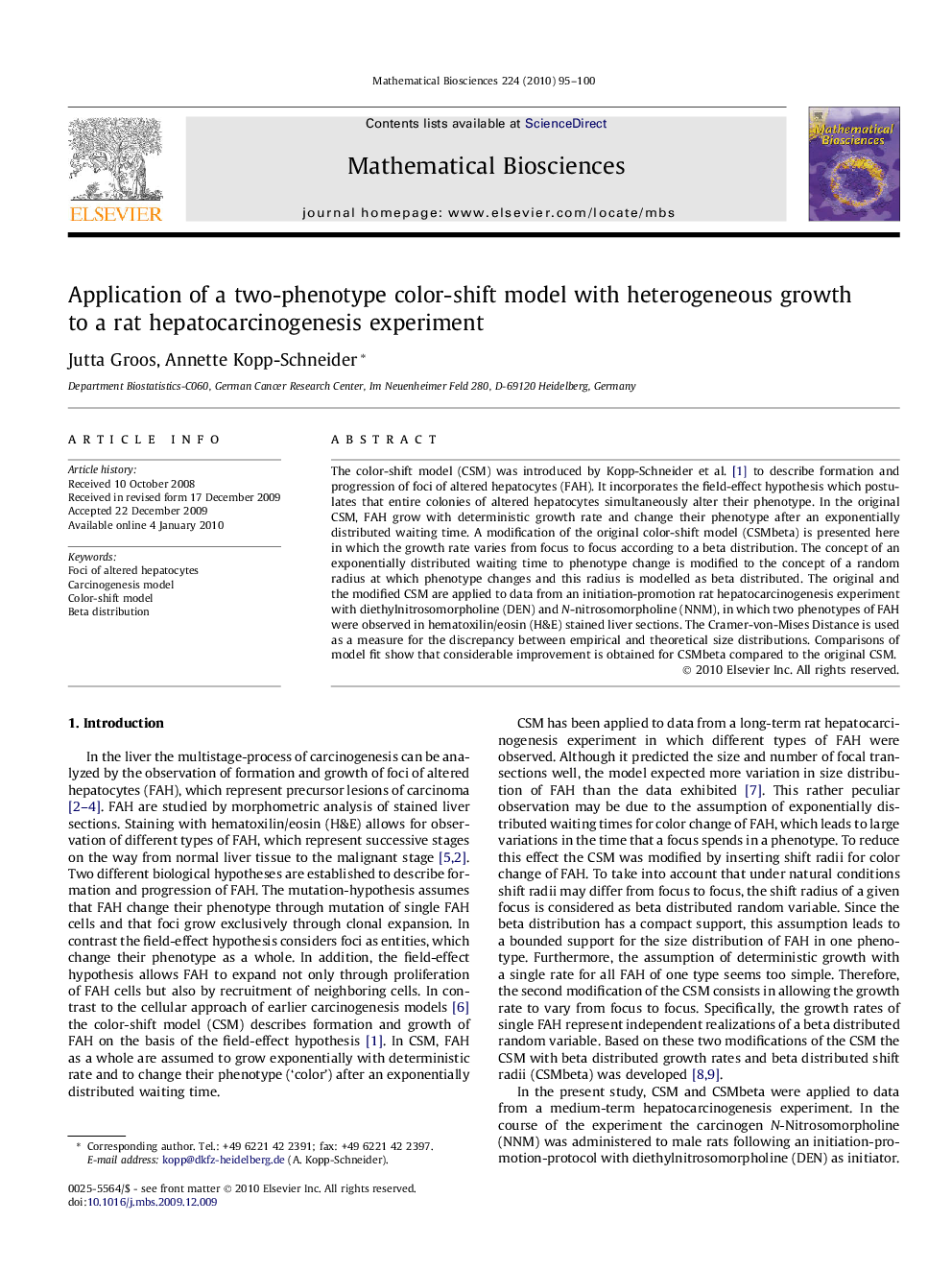| کد مقاله | کد نشریه | سال انتشار | مقاله انگلیسی | نسخه تمام متن |
|---|---|---|---|---|
| 4500597 | 1320007 | 2010 | 6 صفحه PDF | دانلود رایگان |

The color-shift model (CSM) was introduced by Kopp-Schneider et al. [1] to describe formation and progression of foci of altered hepatocytes (FAH). It incorporates the field-effect hypothesis which postulates that entire colonies of altered hepatocytes simultaneously alter their phenotype. In the original CSM, FAH grow with deterministic growth rate and change their phenotype after an exponentially distributed waiting time. A modification of the original color-shift model (CSMbeta) is presented here in which the growth rate varies from focus to focus according to a beta distribution. The concept of an exponentially distributed waiting time to phenotype change is modified to the concept of a random radius at which phenotype changes and this radius is modelled as beta distributed. The original and the modified CSM are applied to data from an initiation-promotion rat hepatocarcinogenesis experiment with diethylnitrosomorpholine (DEN) and N-nitrosomorpholine (NNM), in which two phenotypes of FAH were observed in hematoxilin/eosin (H&E) stained liver sections. The Cramer-von-Mises Distance is used as a measure for the discrepancy between empirical and theoretical size distributions. Comparisons of model fit show that considerable improvement is obtained for CSMbeta compared to the original CSM.
Journal: Mathematical Biosciences - Volume 224, Issue 2, April 2010, Pages 95–100